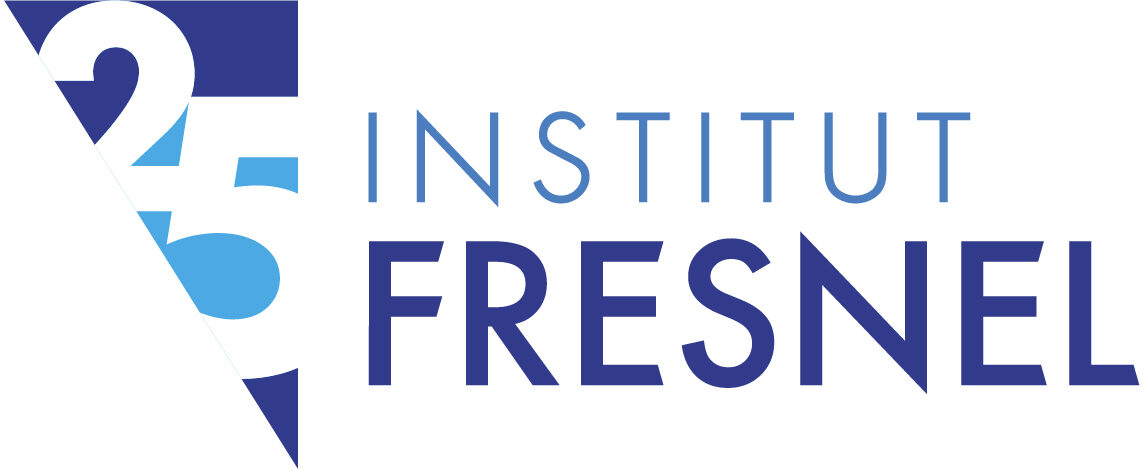Guillaume Giroussenswill defend his thesis entitled “3D Random Illumination Microscopy for fluorescence microscopy” on Thursday, November 21, 2024 at 10:00 a.m. in Institut Fresnel, Campus St Jérôme, Marseille
The Jury will be composed as follow :
– Mme Alexandra FRAGOLA, Président, Université Paris Saclay, ISMO
– Mme Irène WANG, Rapporteur, Université Grenoble Alpes, LIPhy
– M. François ORIEUX, Rapporteur, Université Paris-Saclay, L2S
– M. Nicolas DUCROS, Examinateur, Insa Lyon, Créatis
– Mme Anne SENTENAC, Directrice de thèse, CNRS – Aix Marseille Université, Institut Fresnel
– M. Nicolas DUCROS, Examinateur, Insa Lyon, Créatis
– Mme Anne SENTENAC, Directrice de thèse, CNRS – Aix Marseille Université, Institut Fresnel
– M. Jérôme IDIER, CoDirecteur de these, Université de Nantes, LS2N
Abstract : The Random Illumination Microscopy (RIM) method, introduced in 2019 for fluorescence microscopy, reconstructs an image of the sample with twice the resolution of that obtained with a standard microscope, from around a hundred images obtained under different illuminations of unknown intensity. The main advantage of this method is that it dispenses with the need for a posteriori estimation of illuminances during reconstruction. To achieve this, RIM is based on the resolution of a nonlinear inverse problem of the variance matching type. In practice, this means trying to find the object whose theoretical variance best matches the variance of the recorded images. RIM has been developed within the simplified framework of a two-dimensional (2D) sample, where only fluorescence at the focal plane contributes to the useful signal, and fluorescence from out-of-focus structures is modeled as background noise. The aim of my thesis is to extend RIM to the reconstruction of three-dimensional (3D) samples. This requires improvements in numerical methods, to be able to process much more data, and the study of optical setups, in order to specify the methods used to acquire three-dimensional images. To this end, I have developed two new inversion schemes for RIM reconstruction, based on the standard deviation rather than the variance of the data. The first scheme is an approximate algorithm. It proposes a linear deconvolution of standard deviation by a suitable filter. This deconvolution enables resolution gains of the order of 50% on dense objects, with a computation time compatible with real-time reconstruction. The second reconstruction scheme iteratively estimates the fluorescence density to minimize the error between the experimental standard deviation and the model standard deviation. By introducing a suitable preconditioner, this standard deviation-based iterative inversion proved to be at least 20 times faster than the previously developed iterative variance matching method, while maintaining the same level of super-resolution. I then studied the different 3D acquisition modalities commonly used in optical microscopy (sample translation or translation of the object focal plane by remote focusing). I have shown that 3D images produced with a remote focusing are perfectly suited to extend RIM theory into 3D. They enable us to obtain reconstructions with optimal axial and transverse resolutions. This approach is particularly interesting to applications that suffer from a limited photon budget. I have also shown that acquisitions obtained by translating the sample, which are simpler to implement experimentally, only slightly degrade the quality of the reconstructed image. The final contribution of this thesis goes beyond fluorescence microscopy, and looks at the applicability of the RIM method to coherent imaging. In this case, it can be shown that a standard intensity image acquired in brightfield or darkfield, is directly equivalent to an asymptotic variance of images under speckle illuminations. We then show that the RIM method is equivalent to a Multiplexed Fourier Ptychography method, which simultaneously increases resolution and recovers phase information. The RIM formalism brings a new perspective to Fourier Ptychography, as it reduces the number of images required for reconstruction.

